Minsk
Our band of merry fellows boarded an early flight from Yerevan to Minsk, capital of Belarus. As we looked out from our bus at the architecture and scenery, it became immediately apparent that we had arrived in Europe. Like many countries in eastern Europe, Belarus was celebrating 20 years of independence from the Soviet Union in 2011. Unlike the other countries we visited, Belarus did not want to become separate from Russia when the Soviet Union split up in 1991 but didn’t have a choice. While a democracy in name, the state is really a dictatorship with strong ties to Russia. Everyone speaks Russian, signage is in Russian and much of the food has a Russian influence. Minsk was virtually destroyed in WWII, thus nearly everything in the city is new and modern. Nearly half of the population of the city perished during the War. Our city tour highlighted many monuments to that conflict. Notably, our guide told us that the unemployment rate in Belarus is .08%. This is however tempered by its inflation rate of 36%.
- Soldiers memorial in Minsk
- Independence Square in Minsk
- Belorussian statue in Minsk
- The Gandzasar Monastery outside of Stepanakert.
- Victory Square in Minsk
- Sales booths at the Central Market in Minsk
- Cathedral in Minsk
- Camel rides in Minsk
Khatyn Memorial Complex
About 30 miles outside of the city I saw something that left me speechless, the Khatyn Memorial Complex. Contrary to most war monuments, this is not a tribute to soldiers but a memorial to the civilians who were slaughtered during WWII. I have visited every country in the world – and no other place has moved me emotionally as this memorial did. It is located at the site where a small village (Khatyn) was completely eradicated. Approaching from the parking lot, our view was dominated by a large bronze statue of a man, the sole adult survivor of the village, carrying the dead body of his son in his outstretched arms.
- Cemetary at Khatyn, Belarus
- Memorial at Khatyn
- Statue of a man carrying the remains of his son
The History of Belarus (and Khatyn)
On March 22, 1943, a Nazi convoy was attacked by partisan guerrillas six miles from Khatyn. Four military police were killed, including 1936 Olympic champion Hauptmann Hans Woellke. In retaliation, a Nazi unit composed mostly of criminals drove the villagers from their houses into a barn. The barn was covered with straw and set on fire. When the trapped villagers broke out through the front door, they were cut down by machine gun fire trying to escape. 149 people, 75 of them children, died in the incident. The village was then looted and burned to the ground. Four children survived the slaughter, two by escaping into the woods and two because they had been shielded from the fire by the lifeless bodies of their parents.
On the spot where the barn had stood, there is now a symbolic barn, a concrete structure formed in the shape of a barn roof. All 26 houses in the village were also destroyed. On each spot where a house stood are concrete plots outlining the area the house covered. Each of these has a concrete chimney with a plaque listing the names of the people who had lived there. The narrow dirt road that used to go through the village is laid out now in concrete with a symbolic open gate at each house to show the traditional hospitality of the Belarusian people. Bells chime every thirty seconds from the chimneys to commemorate the fact that a Belarusian life was lost every thirty seconds during the War.
In addition to the human scale (the statue of the adult survivor) and the village scale (each house represented), the Memorial covers the national scale as well. 185 other villages in Belarus were completely destroyed and not rebuilt. Each of these villages has its own symbolic grave and headstone giving the details of that village. Buried in each one are actual ashes from the village. At the very back of this village cemetery stands a forest of metal trees. Each of the trunks features a plaque, 433 in all. Each is engraved with the name of each of the 433 other Belarusian villages that were destroyed but later rebuilt.
Alongside the village cemetery, a long wall lists all the many concentration camps that were in Belarus, with the number of people who died in each one, totaling hundreds of thousands in all. The details of these deaths are horrific and were impossible to wrap my mind around.
Finally, there is an area where 3 linden trees are planted, in a square shape but with one tree missing from the square because at the time the memorial was built, it was believed that 1 out of 4 people in Belarus had been killed during the war. Later it was determined that the Soviets had falsified data and the true figure is one out of every three. An eternal flame burns in place of the missing 4th tree as a final tribute to those who died.
It is estimated that 2,230,000 Belarusians died in the war – nearly one-third of its entire population. The fact that Belarus is the size of Kansas makes this figure all the more dramatic. The Khatyn Memorial is a truly moving tribute to all of those innocent civilians. Its hallowed ground depicts in gory detail the price of war and hate. Many foreign leaders have visited the Khatyn Memorial such as Richard Nixon, Fidel Castro, Rajiv Gandhi, Yasser Arafat, and Jiang Zemin of China.
Castles of Belarus
The following day, we visited two UNESCO World Heritage Sites. The first was the Nesvige Castle, built in 1600 by the Radziwill family. Jackie Kennedy’s sister, Lee, married into that family but never lived in the castle. The Radziwills have been very influential in this area for centuries. The castle archives many of their important documents spanning centuries.
- Grounds of Nesvizh Castle
- Monastery at Nesvizh Castle
- Headquarters at Nesvizh Castle
Next we drove about 30 minutes to Mir Castle, a beautiful structure that has been converted to a hotel and restaurant where we had an excellent lunch. The restaurant was charming, located in what had been the wine cellars, with vaulted ceilings lined with brick and tables in little alcoves. We were given a VIP tour of the hotel section of the castle. For a reasonable price, one could stay in one of a number of beautifully appointed, elegant rooms and feel like royalty.
Kiev
We flew to Kiev, Ukraine for the last country of our organized tour. Kiev is another beautiful, old city full of magnificent Orthodox churches, classical architecture and whimsical statues. We strolled through a unique playground that had been built by artists on our way to dinner at an excellent restaurant with a large neon Khrushchev adorning the entrance.
- Streets of Kiev.
- Memorial statue in Kiev.
- Architecture in Kiev.
- Architecture in Kiev.
- Jewish monument in Kiev.
- “The Motherland Calls” statue in Kiev.
- Park in Kiev.
- The Independence Square in Kiev.
- Sunset in Kiev.
- Kiev cultural building.
- Kiev cultural building.
- The Independence Square in Kiev.
- Architecture in Kiev.
- “The Motherland Calls” statue in Kiev.
- Tanks in Kiev.
We later visited the Pecherska Lavra Caves Monastery Complex. Founded in 1051, monks dug caves and underground labyrinths where they lived and studied. Now, its many narrow passageways are lined with niches containing glass-topped coffins holding mummified remains of monks from Mt. Athos, Greece. Interestingly, a statue in Kiev commemorates the arrival of Vikings in the area. On a hill overlooking the Dnipro River, a Mother Ukraine statue hoists a large sword. Underneath her is a nice museum dedicated to WWII.
We also visited the Chernobyl Museum. Chernobyl is in the Ukraine, on the border with Belarus. Belarus and Ukraine were the two countries that received the brunt of radiation fallout from Chernobyl’s nuclear disaster and are still suffering the majority of its consequences. We had an excellent guide there who spoke very good English and gave us a fascinating tour of the museum. It was well-worth visiting. We ended the day with an hour-long boat ride along the Dnipro River. We could see the many golden domes that dot the city as well as a great view of Mother Ukraine.
- A dead apple tree through a crib symbolize the lost generation. Chernobyl Museum.
- Inside of Chernobyl museum. Faces of all those affected by the disaster on the back walls
- Inside of Chernobyl Museum, featuring artifacts from the nuclear disaster.
After a short flight, we arrived in Simferopol, Ukraine. Our drive through the beautiful countryside of the Crimean Peninsula took us to Yalta. It is a lovely town, situated on the Black Sea and tucked into a bay with mountains behind. It is bustling and vibrant and very cosmopolitan. The Crimea Music Fest was being held on the mile-long pedestrian promenade that goes along the coast, directly across from our hotel. We enjoyed the sights and sounds of the promenade. It has carnival rides, numerous upscale shops, children playing, couples strolling – in some areas, we could hardly make our way through the festive crowd. Paul told us that it is a typical day along the Yalta promenade, the only exception due to the music festival.
- Czar’s Palace in Yalta
- View of the famous Swallow’s Nest castle and coastline from the water
- View of the coastline from Livadia Palace
- View of Yalta and mountains from the sea
- Alexander Nevsky Cathedral, Yalta
We spent a day exploring the area around Yalta, including the medieval town of Livadia where we visited the Livadia Palace, the setting for the Yalta Conference in 1945. It was fascinating to see the rooms where Churchill, Roosevelt and Stalin met, including the chairs they sat in and the table where the Yalta Treaty was signed. The views on our drive along the coast were ruggedly beautiful. There are tall granite slopes, thick forests, and changing vistas at every turn of the winding road. We had an excellent lunch on the grounds of a former palace (the Swallow’s Nest) in a charming restaurant, toured the Alupka Palace and ended the day at a small private zoo.
- Inside the Livadia Palace near Yalta.
- The Swallow’s nest, a decorative castle located between Yalta and Sevastopol.
- Inside the Livadia Palace near Yalta.
- The Swallow’s nest, a decorative castle located between Yalta and Sevastopol.
- The Swallow’s nest, a decorative castle located between Yalta and Sevastopol.
- Outside the Livadia Palace near Yalta.
The following day, we took a longer drive along the coast. We stopped at an overlook where the terrain drops sharply leading to a low, sloping, wide expanse before the sea. On this slope, a number of clusters of houses stand, summer homes for “important people.” One of the little clusters contained what had been Gorbachev’s “dacha” (or summer home). Gorbachev was here when he was deposed and confined to house arrest. We continued on to the little fishing village of Balaklava, situated around a narrow inlet from the Black Sea. It was an important site during the Crimean War (1854-1855).
We climbed up to a point that overlooked the inlet and village to take photos. Next to our overlook, we could see stone foundations that remain from the hospital where Florence Nightingale had done her nursing. Also from this vantage point, we could see the entrance to a tunnel into the side of a cliff, the site of a secret submarine base that the Russians built in 1949 for Cold War operations. It was in use up until 1991 when the Soviet Union split up. It is now a very interesting submarine museum. We walked down its long pedestrian and submarine tunnels to rooms with exhibits of missiles, mines, and electronic equipment. Three thousand people worked there at any one time, hidden from the rest of the world.
- Town of Balaklava
- Entrance to the submarine museum in Balaklava
- Coastline of Balaklava
Our next stop was Sevastopol. It was the site of an assault by British, French and Turkish forces for 349 days during the Crimean War. Finally, the French stormed it and the Russians had to abandon it. Leo Tolstoy was one of the soldiers present in the Russian force and his first writings were about the siege. He was the first author in history to write about the realism of war. Previously, writings had glorified war, not depicted its horrors. We visited a museum with a panorama depicting the siege. It was very well done and very interesting. On our drive back to Yalta, we stopped at the site of the battle that inspired Tennyson’s “Charge of the Light Brigade.”
Driving back to Simferopol, we stopped at Bakhchyarsarai, the former capital of a Crimean Khanate from the 16th century which features beautiful Arabic architecture. Later, we climbed many steep stairs at a unique monastery and church carved into a cliff side and marveled at the craftsmanship that had created it. Then we took an overnight train to Odessa. We spent a day touring this old city, which is full of history and lots of character.
- Monument in Odessa.
- Statues in Odessa.
- Architecture in Odessa.
- Architecture in Odessa.
- Flower garden in Odessa.
- Streets of Odessa.
- Statues in Odessa.
- Streetlights in Odessa.
- Streets of Odessa.
- Horse chariot in streets of Odessa.
- Architecture in Odessa.
- Bayfront statue in Odessa.
A highlight was our tour of underground caves that had been occupied by the resistance fighters during World War II. Odessa was the last stop of our official custom tour designed by Mir Corporation of Seattle, Washington. I cannot speak highly enough of this tour company. Dmitry, the trip coordinator, took our wishful itinerary, improved it and made it an unforgettable 21-day reality. The trip cost, excluding international air, was under $10,000 and included most meals, all admissions, internal air, train fare, and a private Mercedes van with excellent guides.


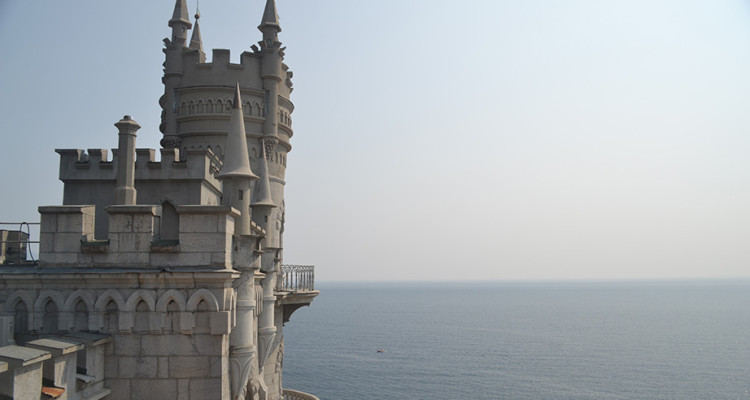
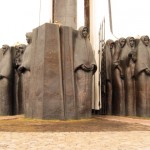
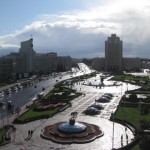
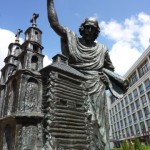
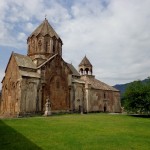
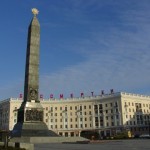
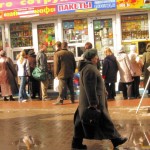
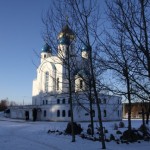
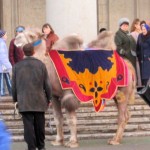
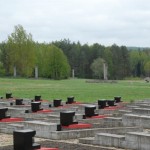
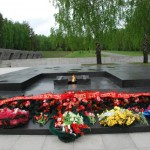
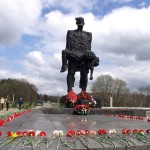
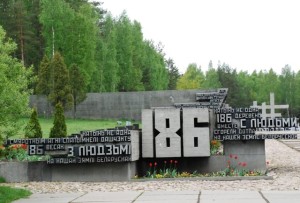
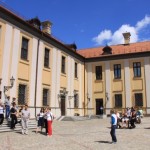
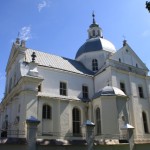
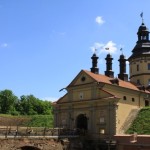
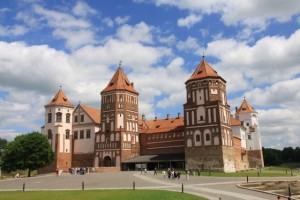
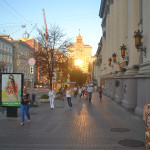
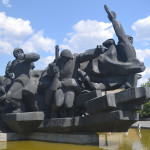
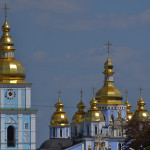
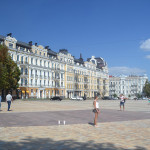
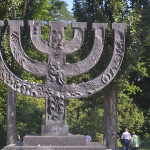
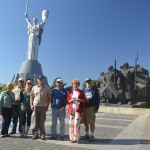
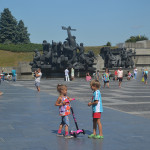
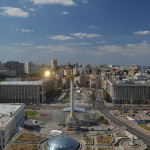
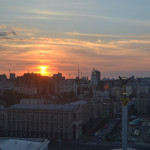
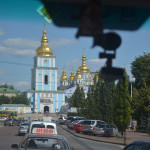
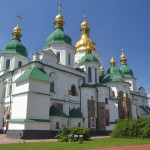

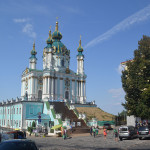
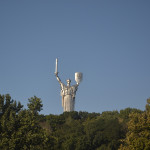
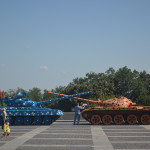
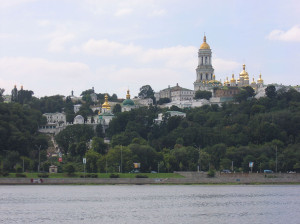
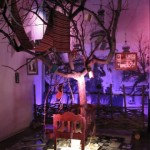
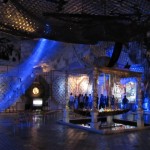
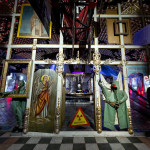
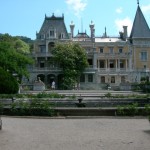
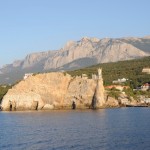
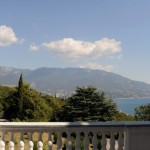
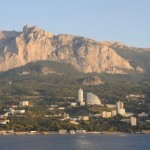

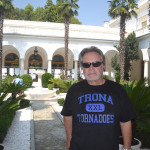
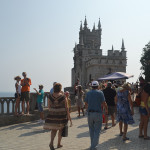
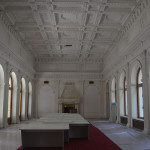
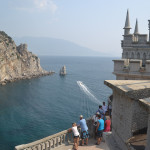
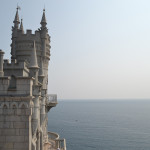
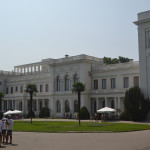
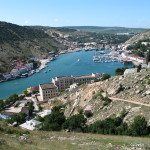
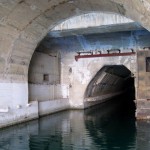
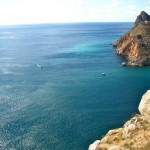
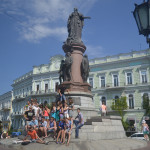
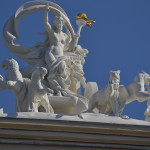
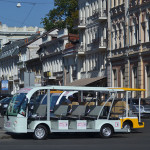
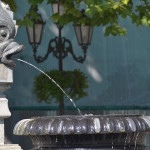

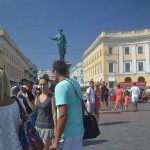
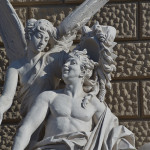
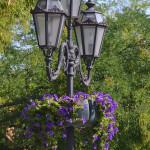
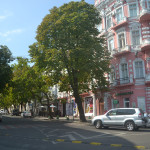
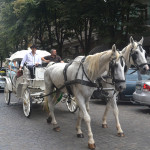
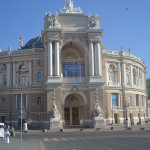
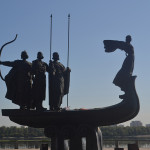
Wow! What an adventure! Good for you! What’s next?
Glad you liked it, Maria. Bill is planning a trans-Caucasus tour in about a month.
Hi Bill,
LOVED your report about this unusual trip, it’s a real treat to read about your adventures and see the beautiful photos.
Lucky you to have toured Crimea – who knows when the next tourist will set foot in this contested territory !
Nilla Stennes
Thank you Nilla 😀